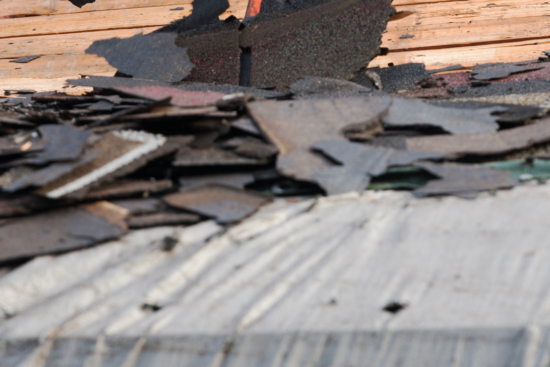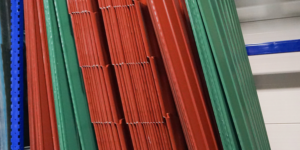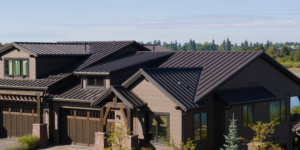© All Rights Reserved | Roof Replacement and Repair - Zaman Roofing LLC. | Website Design & CT SEO Powered by High Point SEO CT
- Google Rating5.0Based on 33 reviewsZaman Roofing - CT Roofing Contractors & Roof Repair5.0Sergey Y."Zaman Roofing” recently completed a roof replacement project in our condo complex, and we are extremely satisfied with their service. From start to finish, their team demonstrated professionalism, efficiency, and exceptional craftsmanship. They were prompt in their communication, providing detailed explanations and answering all our questions. The crew arrived on time, worked diligently, and completed the project within the estimated timeframe.Not only did Zaman Roofing exhibit outstanding technical skills, but they also ensured minimal disruption to our daily activities. They took great care to protect our property, cleaning up thoroughly each day and leaving no trace of debris behind.The quality of the new roof is outstanding. Zaman Roofing used top-grade materials and paid attention to every detail, resulting in a sturdy and visually appealing finished product. The roof has significantly enhanced the overall appearance of our condo complex.We would highly recommend Zaman Roofing to anyone in need of roofing services. Their professionalism, expertise, and attention to customer satisfaction make them a reliable choice for roof replacements. We are grateful for their excellent work and would not hesitate to hire them again in the future.Christopher Z.Zaman Roofing was AWESOME!!!! This is my third time doing a roof in CT on my third home and Zaman did an outstanding job on my rather unique roof line. They even replaced a skylight. I needed a Roof Contract in place before insurance would allow the purchase because the seller was a DeeBag. Zaman worked with my realtor, banker, etc and even waited patiently while the seller delayed the process by 4 months. The week I closed, Zaman Roofing was up and at em. Stripping, prepping and replacing. In and Out. Property was nice and clean after the work was complete. I would highly recommend.Steve TZaman Roofing, located in Berlin, CT, truly excels in providing top-notch roofing services. I am absolutely thrilled to give them a well-deserved 5-star review for their outstanding work. They have proven themselves as experts in roofing Berlin CT, and I couldn't be happier with the results.When it comes to roofing in Berlin, Zaman Roofing stands out from the competition. Their team of skilled professionals demonstrated exceptional attention to detail during the installation of my new roof. They meticulously handled every aspect of the project, ensuring both aesthetics and durability were top-notch.What impressed me the most was Zaman Roofing's commitment to customer satisfaction. From my initial contact with them, they were responsive, courteous, and eager to understand my specific roofing needs in Berlin. Their exceptional customer service throughout the entire process made me feel valued as a client.Zaman Roofing's expertise in roofing Berlin is truly commendable. They have an extensive portfolio of successful projects throughout Berlin, CT, showcasing their skill and knowledge in a variety of roofing styles and materials. Regardless of the complexity of the job, they have the necessary resources to deliver exceptional results.I cannot emphasize enough how satisfied I am with Zaman Roofing's services in Berlin, CT. Their professionalism, reliability, and dedication to their craft are unparalleled. If you're searching for exceptional roofing services in Berlin CT, Zaman Roofing is the company to choose. They will exceed your expectations in every way.In conclusion, Zaman Roofing unquestionably deserves a stellar 5-star rating for their exemplary roofing services in Berlin, CT. Their expertise in roofing Berlin and roofing Berlin CT shines through in their exceptional workmanship and customer service. I highly recommend Zaman Roofing for all your roofing needs.Gary G.Zaman replaced the roof on my 2,200 sq. ft. colonial in 2015. The workmanship was perfect. Unfortunately, over time, the top-of-the line shingles discolored. He was totally supportive in getting the manufacturer to replace them at no cost to me. He just replaced the roof with the new shingles. It was another perfect job. It was completed in one day. The crew was great and they cleaned the area spotless.Chris DWe used Zaman Roofing for our Roof and Gutter Replacement, I acquired 5 quotes for the work and found Zaman to be the most reasonable, it was a Good Decision to choose Zaman Roofing, Seweryn was Professional in every aspect and the Clean-up was nothing short of Amazing, I would Highly Recommend using Zaman RoofingRobert D.Excellent Service and Value - great crew and easy to deal with - highly recommended !Sunghoon P.Great work and reasonable price. I am so happy with their service. I asked a bunch of questions before and after the service and his responses were very prompt and straight to the point. Highly recommend.Adrienne M.I am so pleased that I used this company. My new roof looks fantastic. Such a hard working crew. Seweryn was informative and professional. Price was very completive. Don't hesitate to use them you will be very satisfied. Highly recommend!Nancy M.Good communication, timely response and knowledgeable. Very happy with our experience and highly recommend this company.Beata M.We used Zaman for our roof replacement recently and are very pleased. They replaced our roof in one day and gave us a very competitive quote. Good quality of work. Highly recommended.Lori K.They were here when they said they would. Professional & left everything neat ,cleaned up everything. They were in & out in a day & a half. Would recommend Zaman roifing.Dan R.A+ service, professional and quick response time.Anna G.Zaman and his crew provide great workmanship they installed new roofs they take great pride in the work they do. They were punctual and did a amazing job with the roof installation and clean up. Highly recommend Zaman Roofing to family and friends. Thank you for the opportunity to work with such a amazing contractorScott M.Awesome contractor, I would highly recommend him to family & friends. Seweryn & his crew were here on time & worked diligently. They were the happiest workers I've ever dealt with (I am a former construction project manager with the Federal government). Any & all questions were answered. My neighbors couldn't believe they finished the job in one day & complimented how great the new roof looks.Clement D.Great roofing contractors. I love to recommend it to my friends and family.Karen 9.With the quality, price, timeliness, all round nice guy and great crew, Zaman Roofing LLC is what other companies aspire to be.... Clean, helpful and a pleasure to recommend....james C.Excellent experience from start to finish, all appointments and work times met in a timely fashion, workmanship and clean up left nothing to be desired.Would be a definite recommendation, very pleased.Margaret B.I had obtained multiple quotes and did my due diligence research and Seweryn Zaman came back with fair price and good recommendations. He was professional, explained everything that he was going to do and never once he rushed me during decision process. He showed up on time with his hard working crew and finished my roof in one day. I was amazed with his crew who worked like busy bees. Very impressed with the clean up process and the end product. Two months after he finished my roof he was still helping me deal with the insurance company making sure I had everything I needed. Thank you SewerynSteve B.Very professional and easy to work. The crew came in, replaced my roof and then cleaned up everything! Highly recommended.Jim O.Competitive quote among four others. Seweryn Zaman provided larger color samples of the shingle colors we were interested in. He obtained the building permit, showed up on the day expected with his entire crew. Our older roof was on 24" trusses and needed more plywood replaced than anticipated. He got the additional sheets replaced on the day of the re-roofing. The crew worked with him late until the job was done and picked up every piece of old debris. The roof passed final town inspection with no concerns. Zaman Roofing is easy to deal with; he's responsive on text messages and phone calls. I used them in the past for an emergency repair and he found a well-hidden leak from the builder.Dale C.The crews did a good job, and the leader of the crew did a great job when they replaced the roof of my house in Farming on 7/6&7 this year. When they worked on the project, they worked professionally and in detail. We are very pleased with the work they have done, and highly recommend people to have the company worked on their roof projects.Forrest B.Zaman's was very professional, excellent quality of work and very responsive to our needs. This roofing experience was excellent from start to finish and provided an excellent value. Would certainly recommend them to any friend.Yonatan M.We used Zaman Roofing to replace our roof in 2019 and could not be happier with the service and product. A highly professional company and great personal interaction with the owner. The workers took great care of our landscaping, and the owner was there frequently to supervise the work and take care of finishing touches like flashing the chimney. We have had zero issues since then and highly recommend this company.Quinn V.Zaman was awesome. He was communicative, on-time, and was able to give me a quick inspection of our roof despite the rain. I rarely have a contractor tell me that I didn't need to spend any money, but Zaman told me my roof was fine for the next several years.magdalena K.We recently used Zaman Roofing to replace our 26-year-old roof. Right from the start they were great! Sevy was extremely professional and knowledgeable and gave us a great quote. Everything was done as they described and the final project looked great. The owner was on the job from start to finish as he promised.Ariadna G.Our experience with Zaman Roofing was excellent. I was very impressed with both their work and their customer service. Seweryn was very knowledgeable and professional.Larry G.What a wonderful business. Very responsive. They showed up exactly when expected, completed the project quickly and accurately and left no trace after clean up. All with a very competitive price. I would highly recommend Zaman to anyone looking to have roofing work done.STEVE R.I was very pleased with the roof and gutter repairs performed by Zaman Roofing on two of my buildings. Good workmanship and fair prices, I would recommend and use again.Danielle D.These guys stripped and reshuffled my roof is 1 day! They did an awesome job. Roof is beautiful. He uses a dump trailer which is great and they cleaned up well. Very happy with the work. Also pricing was fair.

Roof Replacement Guide: Choosing the Right Material for Your Home
Category: Roof Maintenance • October 13, 2023
Welcome to our Roof Replacement Guide! Selecting the appropriate roofing material is essential when building or renovating a home. Besides protecting your property from the weather, your roof provides value and beauty. But with so many alternatives, how do you choose? No worries—we’ve got you! We’ll explain everything about choosing the right roofing material for your home in this detailed guide. We’ll help you weigh factors, compare costs, and hire professionals.
Factors to Consider Before Choosing a Roofing Material
There are several aspects to consider when choosing a roofing material for your home. Your climate comes first. Roofing materials vary in longevity and harsh weather resistance.
The roofing material’s aesthetics are also essential. Choose a roof material that matches your home’s architecture and color palette to improve its appearance.
Cost matters too. Due to their durability and energy efficiency, some roofing materials may cost more upfront but save money over time.
Consider maintenance needs. Some materials need regular cleaning or painting, while others are essentially maintenance-free. Consider sustainability and environmental impact. Look for recyclable or eco-friendly roofing materials with good energy efficiency.
Before choosing a roofing material, consider these things to ensure you obtain the best one for your home and budget!
Types of Roofing Materials and Their Pros and Cons
Choose a roofing material for your property from various alternatives. Each roofing material has pros and cons that you should weigh before choosing.
Asphalt shingles are popular. They are economical, easy to install, and available in many colors and styles. They may wear out faster and require more maintenance than other materials.
Another alternative is metal roofing. Long-lasting metal roofs are common. They can survive heavy rain or snow. Metal roofs save energy and money on heating and cooling. Unfortunately, metal roofs cost more upfront.
Tile roofing is another option. Its exquisite style can boost your home’s aesthetics. In good condition, tile roofs can last decades. Although heavier than conventional materials, they may require additional structural support during installation.
Choose recycled rubber or plastic composite shingles for an eco-friendly roof. These mold-resistant fabrics insulate well.
Timber shingles provide character to any home but require frequent care due to decay and insect infestation.
The optimal roofing material for your home relies on budget, climate, aesthetics, and long-term maintenance.
Cost Comparison of Different Roofing Materials
When replacing your roof, pricing is important. Understanding the cost comparison before buying roofing materials is crucial because prices vary widely.
Asphalt shingles are among the cheapest. They’re durable and come in several hues. They may not last as long as other materials.
However, metal roofs are more expensive upfront but save money over time due to their longevity and energy efficiency. They last longer than asphalt shingles and can tolerate harsh weather.
Consider solar panels or green roofs for an eco-friendly choice. These choices may cost more upfront, but they can lower your energy bills and save the environment.
For luxury and insulation, slate or tile roofs may be worth considering. Due to their superior craftsmanship and unusual design, these materials are durable but may cost more.
When comparing roofing material costs, consider short-term and long-term benefits. Remember that choosing a skilled contractor will increase prices but ensure appropriate installation for the best roof performance.
Tips for Hiring a Professional Contractor
There are various things to consider before picking a roof replacement contractor.
Start with research. Find local roofing companies you trust. Review customer testimonies to assess their quality and dependability.
Check the contractor’s license and insurance. This is essential for project liability and damage protection. Request insurance and licensing verification from the proper authorities.
It’s also crucial to collect numerous contractor quotations before choosing. This lets you compare contractor pricing and services to obtain the best deal.
Interview contractors too. Ask about their credentials and work warranties. A competent contractor is informed, trustworthy, and confident in answering all your inquiries.
Ask prior clients for references. Someone who has worked with the contractor can attest to their professionalism and excellence.
Follow these steps to find a reputable, knowledgeable, and high-quality roof replacement contractor.
Maintaining Your New Roof: Dos and Don’ts
To prolong the life and functionality of your new roof, prioritize its upkeep. Dos and don’ts to remember:
Check your roof regularly: Regular inspections can spot problems early. Check for leaks, debris, and missing shingles.
Do not disregard minor repairs: Minor concerns should be handled immediately to avoid major issues. Early repairs, such as repairing roofs or correcting a leak, might prevent costly repairs later.
Clean your gutters periodically to prevent water backup, which can damage your roof. Clear gutters of leaves, branches, and other debris that could impede drainage.
Avoid pressure washing your roof: It may sound like a nice idea, but it might really damage it. Hi-pressure water spray can loosen shingles and remove protective coatings.
Trim overhanging trees: Storms and strong winds can cause debris to fall from trees overhanging roofs. Trim nearby branches to prevent damage.
Do not DIY risky repairs: Roof maintenance typically entails climbing to the roof. If you’re uncomfortable with heights or lack safety gear, leave these repairs to specialists who have the skills and equipment.
You can extend the life of your new roof and avoid costly repairs by following these maintenance tips. Remember that frequent maintenance protects your roofing investment!
Conclusion
Choosing the right roofing material for your home is vital. With so many alternatives, it’s crucial to examine the benefits and disadvantages of each material and how it fits your needs and budget.
Consider durability, maintenance, energy efficiency, and aesthetics before choosing. Research different roofing materials to determine their pros and cons for these factors.
Additionally, consider the local climate. Due to their moisture resistance or extreme temperature tolerance, some materials are better for hot or cold climes. Local experts can offer regionally relevant advice.
Cost is another consideration when choosing a roof. While some materials may cost more initially, they may save money in the long run through energy efficiency or upkeep. Before choosing, weigh current costs and long-term advantages.
When replacing a roof, hire a licensed, insured, and experienced contractor with the chosen material. Before signing contracts, get client references and comprehensive project estimates.
After installing your new roof, follow the manufacturer’s or contractor’s maintenance instructions. Regular inspections can help uncover flaws early so they can be fixed quickly.




